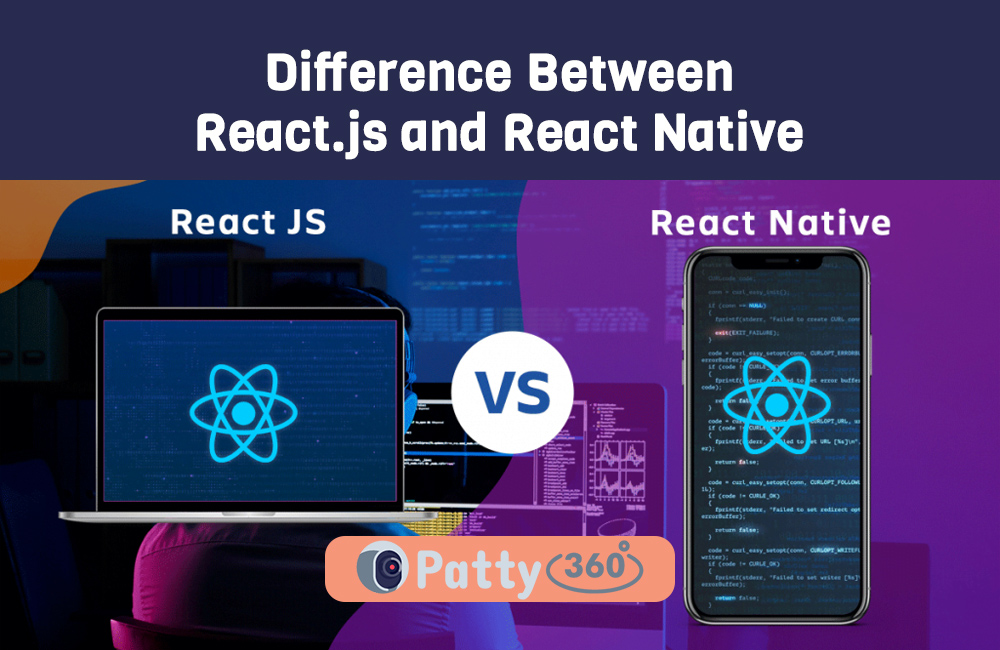Technology
Difference Between React.js and React Native

You can have the same question if you’re new to the field of web and mobile development. It’s simple for a novice to believe that React.js and React Native are interchangeable. After all, “React” is a part of both of their names.
React.js and React Native differ from one another despite having a lot in common. The leading JavaScript frameworks, including React and React Native, have taken the globe by storm, spawning a variety of trends, employment, and beautiful websites! You must comprehend the differences between ReactJS and React Native.
What Is React.js?
An open-source JavaScript package called React.js is used by React js development company to create web applications’ user interfaces. Only the application’s view layer is under its control. With the help of these “components,” developers may create intricate user interfaces. React.js is made up of two parts: the components, which are the sections that include the HTML code and the user interface elements, and the HTML page.
It is created by former Facebook software engineer Jordan Walke. It was first created and managed by Facebook and then included into well-known programs like WhatsApp and Instagram.
Advantages of React.js
- Online tutorials, guides, articles, and documentation are all readily available if you want to learn React.js. You can quickly pick up React.js thanks to this and gain a solid understanding of it.
- While building an application, a React.js developer can reuse a variety of components. The logic and rendering offered by each component differ.
- Another fantastic component that improves performance is virtual DOM. By doing this, it makes sure that the lightweight duplicate of the real DOM gets updated. Efficiency and usefulness are improved as a result.
What Is React Native?
Similar to Reactjs, Facebook created React Native in 2015 as an open-source framework. It is among the greatest libraries for creating native mobile applications for many operating systems, including Windows, Android, and iOS. It also contains reusable parts that work across many platforms.
React Native is a completely distinct framework for developing applications; it is based on Reactjs for foundation abstraction. Building UI elements for mobile applications is React Native’s main use case. Over 25,000 applications utilize it globally.
Instagram, Facebook Ads, Bloomberg, Walmart, and SoundCloud are well-known applications that use React Native. But React Native, which is owned by Meta Platforms and powers about 5.3 percent of mobile games and apps, came in third place.
Advantages of React Native
- JavaScript, like React.Js, serves as the basic language for React Native. With numerous iterations and flexibility, this creates the same impression as app development.
- The ability to create cross-platform apps is the main advantage of adopting React Native. You can launch on the Android and iOS platforms using the same codebase thanks to code reuse.
- Less optimization and debugging are needed when distributing a React Native application across several platforms.
Main Differences
- React Native is a base derivative in and of itself, whereas React.js is a base derivative of React DOM for the web platform. This indicates that while the components are unchanged, the syntax and procedure have changed.
- In the end, React.js is a JavaScript toolkit that allows developers to create an engaging and high-performance user interface (UI) layer, while React Native is a full framework for creating cross-platform applications for the web, iOS, and Android.
- js programs render HTML in the user interface but React Native apps use JSX, which is essentially Javascript, to render the user interface.
- While styling in React.js is done using CSS, styling in React Native is created using a stylesheet.
- Similar to web development, animation in React.js is possible via CSS, however in React Native, motion is induced across many React Native application components utilizing an animated API.
Conclusion
JavaScript apps can be created using the React framework. Building native, cross-platform mobile apps is made possible by the React Native platform as a whole, and React.js is a JavaScript framework that you can use to build a high-performing UI layer. The core of React Native, React.js, embodies all of React’s principles and syntax, making the learning curve simple.
In contrast to React Native, which leverages Native APIs to render components on mobile devices, React renders browser code through the Virtual DOM. With React Native, you must become familiar with React Native syntax because React uses HTML.








